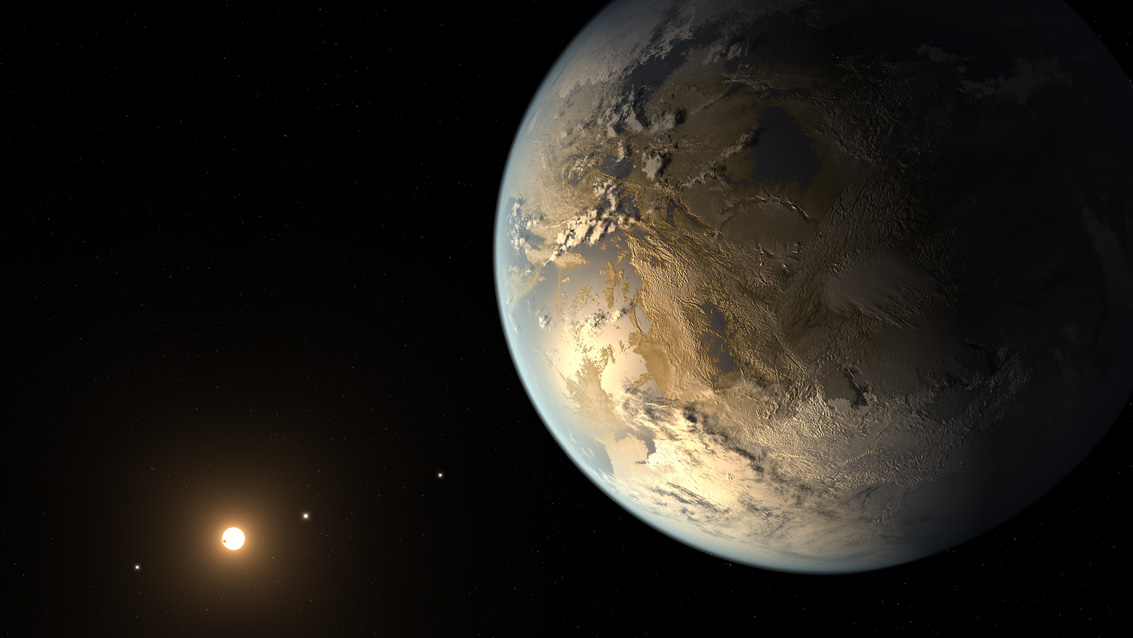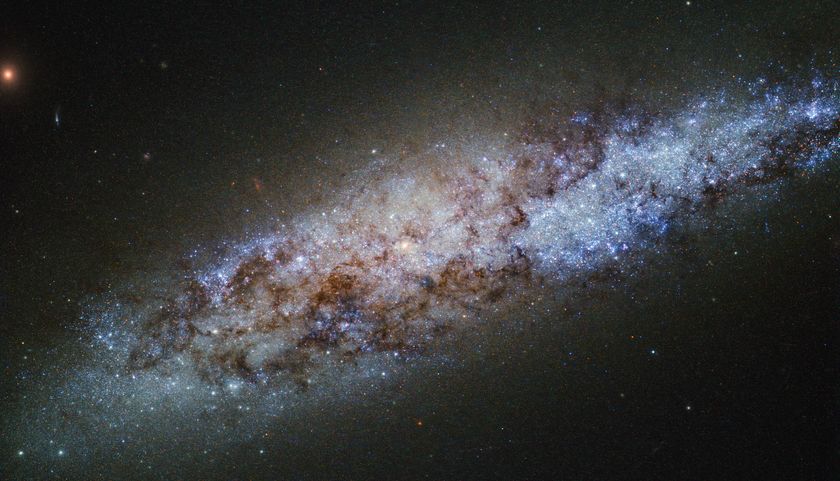
Humanity will probably have to wait a few decades to find out if life is common beyond our own solar system.
While NASA's James Webb Space Telescope (JWST) — which is scheduled to launch in 2018 — will be capable of finding signs of life on nearby exoplanets, a broad and bona fide hunt for life beyond Earth's neighborhood will require bigger spacecraft that aren't even on the agency's books yet, experts say.
"To find evidence of actual life is going to take another generation of telescopes," JWST telescope scientist Matt Mountain, director of the Space Telescope Science Institute in Baltimore, said during a NASA briefing Monday (July 14). "And to do that, we're going to need new rockets, new approaches to getting into space, new approaches to large telescopes — highly advanced optical systems." [10 Exoplanets That Could Host Alien Life]
A chance to find signs of life

The $8.8 billion JWST features 18 hexagonal mirror segments that will work together to form one 21-foot-wide (6.5 meters) mirror — larger than any other mirror that's ever flown in space, NASA officials said. (For comparison, the agency's iconic Hubble Space Telescope sports an 8-foot, or 2.4 m, primary mirror.)
JWST is optimized to view in infrared light. The telescope should be able to do lots of different things during its operational life, researchers say, including scanning the atmospheres of alien planets for oxygen and other gases that could be produced by living organisms. (Such delicate work is best performed by space telescopes, which don't have to look through Earth's atmosphere.)
JWST will work in concert with another NASA space mission in this regard, performing follow-up observations on promising nearby worlds found by the agency's Transiting Exoplanet Survey Satellite (TESS), which is scheduled to blast off in 2017.
Get the Space.com Newsletter
Breaking space news, the latest updates on rocket launches, skywatching events and more!
"With the James Webb, we have our first chance — our first capability of finding signs of life on another planet," MIT astrophysicist Sara Seager said during Monday's NASA briefing. "Now nature just has to provide for us." [5 Bold Claims of Alien Life]
A numbers game
But nature may not be so willing, at least during the JWST mission, Seager and other experts stress. And it all comes down to numbers.
There is no shortage of planets in the Milky Way. Our galaxy teems with at least 100 billion planets, 10 to 20 percent of which, Mountain said, likely circle in their host star's "habitable zone" — that just-right range of distances that could allow liquid water to exist on a world's surface. If there's nothing terribly special about Earth, then life should be common throughout the cosmos, many scientists think.
But most exoplanets are very far away, and all of them are faint. JWST, while large by current standards, won't have enough light-collecting area to investigate more than a handful of potentially habitable planets, researchers say.
A spacecraft with a 33-foot (10 m) mirror would give researchers a much better chance of finding biosignatures in alien atmospheres, but Mountain would like something even bigger.
"With a 20-meter telescope, we can see hundreds of Earth-like planets around other stars," he said. "That's what it takes to find life."

Laying the foundation
There are no concrete plans to build and launch such a large space telescope, whose size would pose a number of logistical and engineering challenges. However, JWST is a potentially big step along the way to this goal.
For example, the JWST team figured out how to make mirror segments with incredible precision — a skill that could come in handy down the road.
"They're basically perfect," said JWST senior project scientist John Mather of NASA's Goddard Space Flight Center in Greenbelt, Maryland, who won a Nobel Prize in 2006 for his work with the agency's Cosmic Background Explorer satellite.
"If we were to expand the mirror to the size of the continental United States, the mirror would be accurate to within 3 inches," Mather said. "This is completely amazing technology we have now mastered and are using."
The hunt for life on distant worlds will be a multi-generational effort that goes from TESS and JWST to other, larger space telescopes, Seager said. And overcoming the various challenges involved will almost certainly require the cooperation of a number of different countries and organizations.
"Putting together the partnership that can find Earth 2.0 is a challenge worthy of a great generation," Mountain said.
Closer to home
All of this does not necessarily mean, however, that alien life won't be detected until humanity launches an enormous space telescope. Indeed, confirmation that Earthlings aren't alone in the universe may come from worlds much closer to home.
For example, NASA's next Red Planet rover, which is due to launch in 2020, will hunt for signs of past Mars life. And both NASA and the European Space Agency have plans to mount a mission to Jupiter's ocean-harboring moon Europa, which many experts regard as the solar system's best best to host alien life.
Europe's JUpiter ICy moons Explorer (JUICE) mission is currently scheduled to blast off in 2022 to study the Jovian satellites Callisto and Ganymede in addition to Europa. NASA officials have said they hope to launch a Europa mission sometime in the mid-2020s.
Follow Mike Wall on Twitter @michaeldwall and Google+. Follow us @Spacedotcom, Facebook or Google+. Originally published on Space.com.
Join our Space Forums to keep talking space on the latest missions, night sky and more! And if you have a news tip, correction or comment, let us know at: community@space.com.

Michael Wall is a Senior Space Writer with Space.com and joined the team in 2010. He primarily covers exoplanets, spaceflight and military space, but has been known to dabble in the space art beat. His book about the search for alien life, "Out There," was published on Nov. 13, 2018. Before becoming a science writer, Michael worked as a herpetologist and wildlife biologist. He has a Ph.D. in evolutionary biology from the University of Sydney, Australia, a bachelor's degree from the University of Arizona, and a graduate certificate in science writing from the University of California, Santa Cruz. To find out what his latest project is, you can follow Michael on Twitter.











